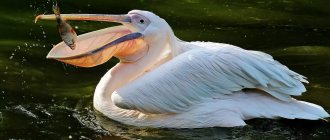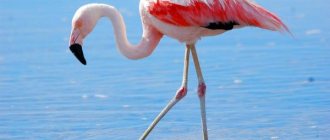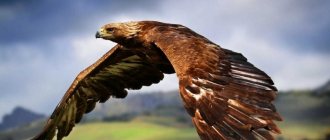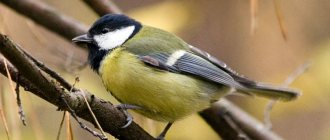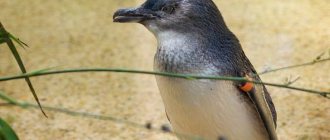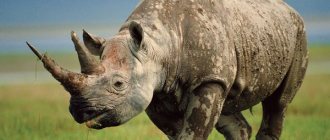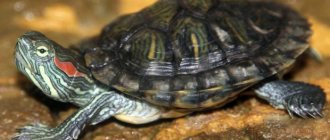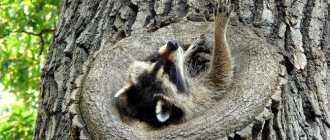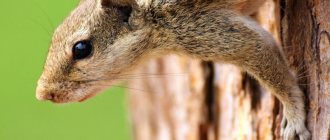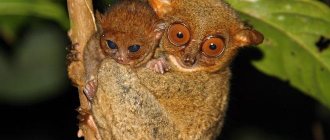The swan bird is a symbol of beauty, tenderness and grace. Thanks to their proud posture, these beautiful creatures are known all over the world and are constant heroes of a number of fairy tales, legends, traditions and modern cartoons. Many species of swans are permanent residents of city ponds, where people feed them. In addition, recently the practice of breeding swans in captivity for further maintenance in frequent artificial ponds and reservoirs.
The swan bird is a symbol of beauty, tenderness and grace.
These birds are under special protection in some regions of the planet, so their numbers remain stable. Some breeds of swans, which were in danger of extinction, were diverted from this dangerous trait due to the measures taken. Now their numbers are gradually recovering. Thanks to the increased attention from ornithologists, many interesting facts about swans, their life and behavior in the wild have become known to the general public.
Where do swans live?
Thanks to modern tools used to track the movements of wild birds, much more is known about their distribution areas than 50 years ago. Not only its appearance, but also its lifestyle depends on where a swan lives. The most numerous northern species tend to be migratory birds. In summer, they are found in tundra and forest areas of America and Europe. Here, during a period of abundance, they try to hatch chicks and fatten.
Some species of these unique birds are actively settling in the middle zone. This largely depends on whether there are freshwater bodies of water in a particular region that can provide these large birds with the necessary amount of food. Typically, northern species of swans migrate to more southern regions for the winter, populating the waters of Africa, India and some remote islands. Obtaining this information was made possible thanks to sensors that ornithologists studying the behavior of these birds attached to the legs of individual individuals. It became known that these birds do not always return to the same wintering place as in previous years.
When flying from the northern meadows, the American swan tries to find a suitable body of water in the south, that is, on the California coast and Florida, where it will be reliably protected from human eyes and predators. This species is protected because its numbers are not too high. The white swan can sometimes winter in the middle zone, inhabiting large urban reservoirs where the water does not freeze. Here the birds rely on regular feeding from people. The exact criteria for choosing a wintering site are unknown.
Thanks to their proud posture, these beautiful creatures are known all over the world.
Small populations live in Central Asia and northern Africa. In addition, the birds are found in New Zealand and Australia. In regions where the air temperature does not drop to critical levels, birds may not make long migrations. They typically live in tropical swamps and lakes. Usually these birds live in pairs throughout the year, protecting their chosen area from other birds. None of the swan species will tolerate invaders near them. They fiercely defend the territory they occupy.
Population and species status
Currently, all species of swans, except for the small one, which is listed in the Red Book of Russia with the status of a restored species, are widespread and their conservation status is designated as “causing the least concern.” However, in addition to the already mentioned small or tundra swan, the American Red Book is also listed in the Russian Red Book, which was given the status of a rare species in our country.
Well, in conclusion, I would like to say a few words about several not very well-known legends and traditions associated with these beautiful birds. Thus, the Ainu people had a legend that people descended from swans. The Mongols in ancient times believed that all people were created by gods from swan paws. And the peoples of Siberia were sure that swans did not fly south for the winter, but turned into snow and after the onset of spring they became birds again. All these legends indicate that swans have long attracted the attention of people and fascinate them with their grace and mystery. And our main task is to preserve these marvelous birds so that descendants have the opportunity to see them in the wild and admire their graceful and majestic beauty.
Return to content
Gallery: swan bird (25 photos)
Appearance
Most people know from early childhood what this majestic bird looks like. This is due to the fact that swans have a number of characteristics that distinguish them from other members of the family. Birds are the largest waterfowl found in nature. Depending on the variety, the body length of the bird can vary from 1.2 to 1.8 m. The wingspan usually ranges from 2 to 3 m. The weight of a swan, depending on its variety, can range from 5-6 to 8-12 kg. The physique is very dense. The wings are strong and wide, which allows them to support a fairly large body weight. Considering the description of the swan, special attention is drawn to the long S-shaped neck.
Each species of these waterfowl has its own neck posture. For example, some species of these birds hold their necks vertically, while others bend their necks strongly. They need such a long neck for balance. The beak of birds is quite large in size. It is slightly flattened and wide. Some varieties have a characteristic thickening at the base.
The beak of a swan, depending on its breed, can be pure black, red or yellow, or include a combination of these colors.
Despite the fact that, when on the surface of the water, these birds look airy and graceful, on land they are very clumsy. This is due to the fact that their paws are relatively short and equipped with membranes. This makes it much more difficult to move on a hard surface. The paws are positioned so as to make it easier for the swan to swim. Usually the lower limbs are dark in color.
These birds have a rather short tail. Below it is the so-called coccygeal gland. Almost all waterfowl have it. This gland is necessary for the production of waxy fat, which is later used by the bird to lubricate its plumage. This treatment makes it waterproof. In most cases, the plumage of adults is a single color of gray, black or white, but some varieties have combinations of these colors. The swan's plumage is very soft to the touch, so these birds often became victims of people who wanted to get them. The young are easily recognizable as they are gray in color.
Most people know from early childhood what this majestic bird looks like.
Chicks at home
Very often, keeping swans at home begins with the purchase of chicks. Young swans are quite unpretentious and independent, do not require artificial feeding and are in good health. Infant mortality among chicks is very low. It is better to buy babies at the age of 14 - 20 days. In order for the chicks to grow and develop well, they need an aviary and a pond, as well as several dry areas with a house or nest. Feeding the chicks is not difficult. Babies can be given:
- Live fish fry,
- Corn,
- Sprouted grain,
- Vegetables and fruits, root vegetables,
- Fresh chopped herbs
- Dairy products,
- Boiled eggs,
- Compound feed.
The chicks will spend most of their time on the water, collecting various invertebrates and aquatic plants from the bottom. It is recommended to install several feeders near the pond, where the food will be poured.
Lifestyle of swans
The main elements for this bird are air and water. Thanks to their unique body structure and very dense plumage, these majestic creatures are able to rise to a height of about 8000 m. Swans are monogamous creatures. They spend their entire life together with their partner. If one of the birds in a pair dies, the second can find a new mate, provided that it is young enough. Old individuals can spend the rest of their lives alone. Most species of these birds make long migrations. At the same time, there are also those who live sedentary lives. Swans, like all waterfowl, consume a wide variety of food that they can obtain in and around a body of water. Birds' diet usually includes:
- seaweed;
- roots;
- small aquatic insects;
- frogs;
- small fish;
- crustaceans;
- herbs.
Behavior of swans during the breeding season
Despite the fact that birds arrive at their nesting sites quite early, their mating games generally begin in late spring, when the temperature has already become stable. First, a pair of swans engages in courtship, performing special synchronized movements that allow them to renew their existing relationship. Next, the female swan, having found a secluded place in the sedge, begins building a nest. This place should be so large that the female can safely incubate eggs in the future. It can be from 1.5 to 3 m in diameter. The height of a swan's nest can reach 0.8 m. Usually there are from 3 to 9 eggs in a clutch.
Incubation is usually done by the female. The incubation period is usually 33 to 40 days.
Not everyone knows the name of a baby swan. In fact, there is no separate word for the young of this species. At the same time, it has long been customary to call swan chicks “ugly ducklings.” Externally there is a certain similarity. Typically, chicks have gray plumage. After hatching, the young dry out and can immediately begin to feed on their own under the close attention of their parents. This is the most dangerous period in the life of chicks. Predators strive to feast on young animals, so their safety depends on the vigilance of adults.
Reproduction and offspring
Swans return in the spring from their wanderings in early spring, when the snow has not yet melted, and the reservoirs where they are accustomed to nest are still covered with a thin crust of ice. In the south this happens already in mid-March, but these majestic birds return to the north only at the end of May. Swans arrive at nesting sites in pairs, having found a permanent partner during the winter.
Due to their inherent monogamy, swans remain faithful to one partner for the rest of their lives and, if something happens to that partner, they will no longer look for a new pair. Previously, there was a belief that a swan, having lost its girlfriend, would not be able to live without her and would die of grief. But at present, such legends are considered unproven due to the fact that ornithologists have not recorded a single similar fact.
After arrival, a pair of swans occupies an area previously chosen by the birds and begins to build a large nest, up to three meters in diameter, that looks like a floating pile of branches, tree branches, reeds and coastal grass. At the same time, they zealously protect the territory from the invasion of their fellow tribesmen: because of this, fierce battles often occur between swans, when birds with loud screams collide with their chests in the water, without ceasing to flap their wings and forcefully beat each other with them.
After the nest is built, the female lays several eggs in it and incubates them for an average of 40 days . All this time, the male guards the clutch and warns the female of danger. If something really threatens the swan couple, then they fill the nest with fluff, and they themselves soar into the air and, waiting until the danger passes, circle around it.
Important! People who accidentally stumble upon a nest or chicks of a swan should quickly leave the territory of these birds, since if he does not do this, they will fight desperately, protecting their offspring and at the same time using their powerful wings and strong beak, which can lead to serious injury and even death to the unwitting trespasser.
Little swans hatch and are quite ready to move independently and eat food. Adult birds take care of them for about a year. The chicks, under their supervision, get their own food in shallow water; they also often bask under their mother’s wings or climb onto her back. The entire brood, together with its parents, leaves for the south in the fall, and in the spring, as a rule, the whole family also returns back to the nesting sites. Young swans mature slowly and reach sexual maturity only at four years of age.
Return to content
